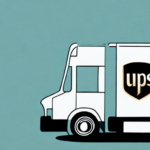Understanding Economy Mail
Economy mail, also known as standard mail, offers a cost-effective method for shipping packages for both personal and business purposes. Unlike expedited services, economy mail typically utilizes surface transportation methods such as ground or sea freight, resulting in longer delivery times. This service is ideal for non-urgent shipments, allowing individuals and businesses to save on shipping costs without compromising on the ability to send packages domestically or internationally.
Types of Economy Mail Services
Media Mail
Media Mail is designed for sending books, DVDs, CDs, and other media-related items. It provides a budget-friendly option for educational and entertainment materials.
Parcel Post
Parcel Post accommodates non-media items, making it suitable for a wide range of packages that do not fall under the media category.
First Class Mail
First Class Mail is ideal for lightweight packages, typically under 13 ounces, and can be delivered directly to standard mailboxes.
Standard Post
Standard Post offers a low-cost alternative to Priority Mail for packages that are not time-sensitive, ensuring affordability for bulk shipments.
Bound Printed Matter
Bound Printed Matter is a cost-effective solution for publishers mailing magazines, catalogs, and other printed materials.
Pros and Cons of Using Economy Mail
Advantages
- Significantly lower shipping costs compared to expedited services.
- Suitable for non-urgent shipments, allowing for budget allocation to other business areas.
- Environmentally friendly options available, reducing carbon footprint through ground transportation.
Disadvantages
- Longer delivery times, typically ranging from 6 to 10 business days.
- Limited tracking and insurance options, which may not be ideal for high-value items.
- Size and weight restrictions can limit the types of packages that can be sent.
Cost-Saving Strategies with Economy Mail
Businesses and individuals can implement several strategies to maximize savings when using economy mail:
- Avoid Priority Services: Utilize economy options instead of Priority or Express Mail to reduce costs.
- Choose the Right Service: Select the most appropriate mail service based on package weight, size, and destination.
- Consolidate Shipments: Combine multiple packages into a single shipment to take advantage of bulk shipping rates.
- Use Flat-Rate Boxes: When applicable, flat-rate boxes can offer predictable and lower shipping costs.
- Leverage Discounts: Many carriers offer discounts for businesses that ship frequently or in large volumes.
According to the United States Postal Service, businesses can save up to 20% on shipping costs by optimizing their shipping methods and utilizing economy mail services effectively.
Best Practices for Packaging and Shipping
Secure Packaging
Ensure that items are securely packaged to prevent damage during transit:
- Use sturdy boxes appropriate for the weight and size of the contents.
- Wrap fragile items with bubble wrap or other protective materials.
- Seal boxes with strong, high-quality tape to prevent accidental openings.
Accurate Labeling
Clear and accurate labeling is essential for timely delivery:
- Include both sender and recipient addresses clearly.
- Use waterproof labels or protect labels with clear tape.
- Ensure that all information matches the declarations to avoid delays.
Weight and Size Considerations
Accurately weigh and measure packages to avoid additional fees or rejections. Utilize shipping calculators provided by carriers to estimate costs based on weight and dimensions.
Tracking and Ensuring Delivery
Tracking packages is crucial for both personal and business shipments. Most economy mail services offer basic tracking options:
- Use Tracking Numbers: Always obtain a tracking number when available to monitor the package's progress.
- Set Up Notifications: Sign up for email or text notifications to receive updates on the package status.
- Plan Ahead: Send packages well in advance to account for the longer delivery times associated with economy mail.
For more comprehensive tracking features, businesses might consider investing in additional tracking services offered by carriers like FedEx Economy or UPS Economy Services.
Compliance with Shipping Regulations
Adhering to shipping regulations is essential, especially for international shipments:
- Item Restrictions: Verify that the contents comply with destination country regulations and carrier policies.
- Documentation: Provide all necessary customs forms and declarations accurately to prevent delays.
- Packaging Standards: Follow specific packaging guidelines to ensure that packages are accepted and processed without issues.
Refer to official resources such as the USPS International Shipping Guidelines for detailed information.
Selecting the Right Economy Mail Service Provider
Choosing the appropriate service provider can significantly impact shipping efficiency and costs:
- Evaluate Costs: Compare rates among different carriers to find the most economical option for your needs.
- Assess Delivery Speeds: Ensure that the chosen service meets your delivery time requirements.
- Review Package Restrictions: Check for any size or weight limitations that may affect your shipments.
- Consider Customer Service: Opt for carriers with strong customer support to handle any issues that may arise.
- Analyze Tracking Features: Select carriers that offer reliable tracking options to monitor shipments effectively.
Tools like Shipping Solutions can help businesses compare different carriers and select the best service provider based on their specific requirements.
Case Studies: Success with Economy Mail
Several businesses have successfully reduced their shipping costs by adopting economy mail services:
- Book Publishing Company: Saved $4,000 monthly by switching to Media Mail for shipping educational materials.
- Online Retailer: Reduced annual shipping expenses by $1,000 by utilizing Parcel Post instead of Priority Mail.
- Non-Profit Organization: Achieved savings of $2,500 per year by consolidating packages and using flat-rate boxes for bulk shipments.
These examples demonstrate the potential for significant cost savings and operational efficiency gains through strategic use of economy mail services.
Conclusion
Economy mail presents a viable and economical solution for shipping packages, particularly for non-urgent and bulk shipments. By understanding the various types of economy mail services, weighing the pros and cons, and implementing cost-saving strategies, both individuals and businesses can effectively manage their shipping needs while minimizing expenses. Ensuring proper packaging, adherence to shipping regulations, and selecting the right service provider further enhance the benefits of economy mail. Whether shipping domestically or internationally, economy mail can provide reliable and affordable delivery options that support financial sustainability and operational efficiency.




















